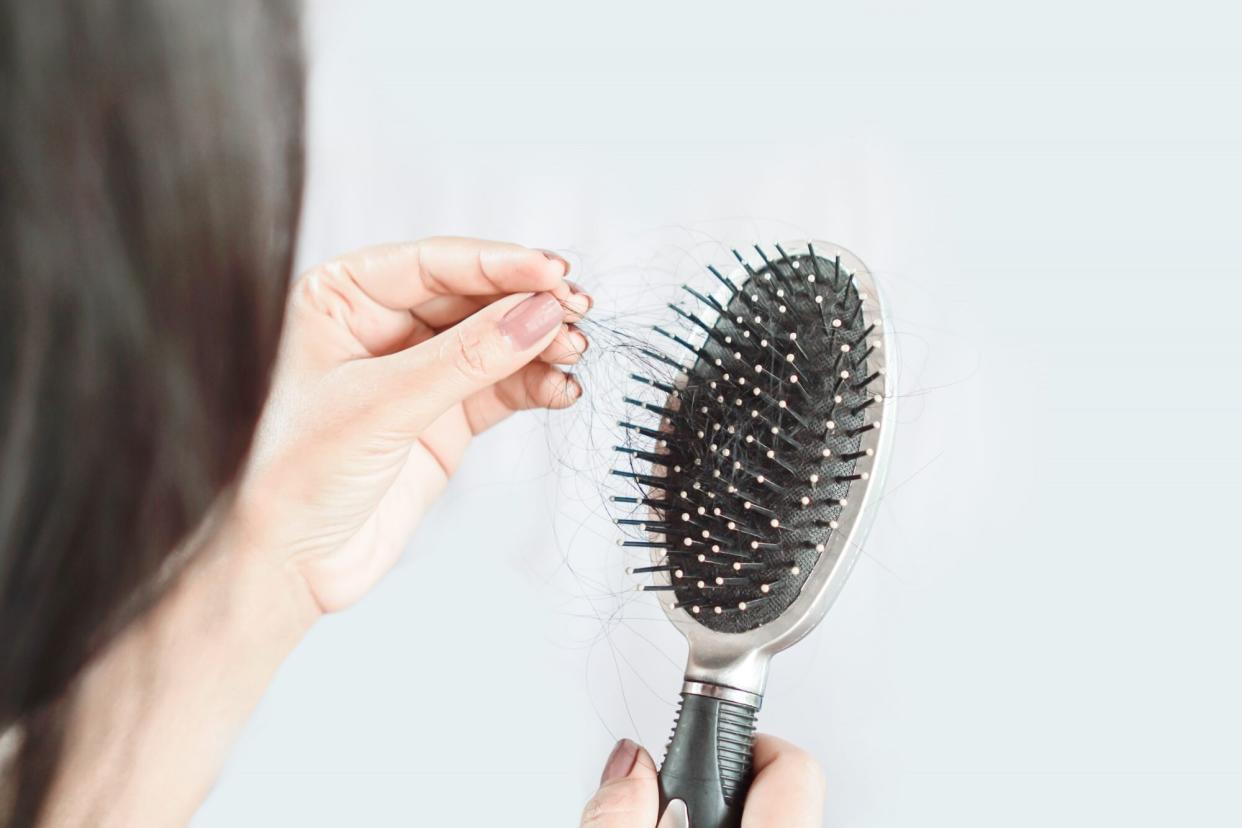How Much Hair Is "Normal" to Lose When You Brush It Post-Shower?

Siriporn Kaenseeya / EyeEm / Getty Images
Noticing an excessive amount of hair loss is always worth a visit to your doctor. But if you are seeing slight hair shedding here and there, don't fret—experts note that this is actually a standard part of human physiology. "The hair growth cycle has three main phases: anagen (growth), telogen (resting), and catagen (regression)," says Dr. Camille Howard-Verovic, DO, FAAD, a dermatologist and the founder of Girl+Hair. "The phase between anagen and telogen is called exogen; this is when your hair is actively shedding." In turn, you will lose an average of 100 hairs every day. However, after washing your strands, how much hair shedding is normal? Ahead, we gather more expert insight and recommendations on how to keep your hair healthy after you wash it.
Related: Should You Swap Out Your Shampoo and Conditioner Regularly?
Your hair wash routine actually helps release shedding hairs.
While losing 100 strands a day in general is normal, you'll see an uptick if you go longer between washes and do little brushing or combing on non-wash days. "The pent up shed hairs have not had the opportunity to fall until you condition or brush your hair next," explains Jeni Thomas, the global science communications director for Procter & Gamble Hair. "For example, if you wash every third day, you could have up to 150 to 300 hair fibers just waiting to be released next time you fully detangle your hair." So, if you see some shedding after showering, don't worry: "It's important to note that washing and conditioning do not cause hair to fall—the full detangling that allows shed hairs to become fallen hairs often happens with conditioning," she adds.
Your hair type can also play a role in the hair loss you'll see.
Curly and coily hair tends to hold on to shed strands longer since the root area is thicker, Thomas says. "Therefore, it may appear that those with curly or coiled hair have more fallen hairs when they wash compared to those with straight hair, but the difference is in how easily the shed hairs can fall from the masses," she shares. "Coarser types can also hold onto shed hairs longer than smooth hairs through a Velcro effect between fibers."
Protect against hair breakage when brushing post-shower.
Since strands are most susceptible to breakage when they are wet—curls and coils are the most delicate, due to their lower elasticity—be gentle during the detangling process, Dr. Howard-Verovic explains. Consider using the Pattern Beauty Shower Brush ($17, ulta.com) and take a careful approach.
Before even reaching for your hairbrush, though, make sure you condition properly to prevent breakage in the first place. "A good conditioner, like Pantene Miracle Rescue Conditioner ($8.59, target.com), will strengthen your hair against breakage while you're styling, even if you have highly breakage-prone hair—like hair that is color-treated or regularly heat-styled," Thomas shares. "You can also add a leave-in conditioner to restore hair with strengthening nutrients, like lipids, so it can better withstand the stress it undergoes when you style." She recommends Pantene Mist Behaving Dry Conditioner Mist ($7, target.com) for non-wash days.
Treat hair with care all of the time.
Since tight braids or updos can pull at the root and end up damaging the follicles, Thomas suggests going for looser hairstyles when possible or using products, like Pantene Gold Series Triple Care Braid Cream ($7.22, walmart.com), to help ease tension. Plus, whenever you are using a hot tool on your hair, like a flat iron or curling wand, use a protectant—or use low heat to preserve the integrity of your strands without sacrificing the style.

